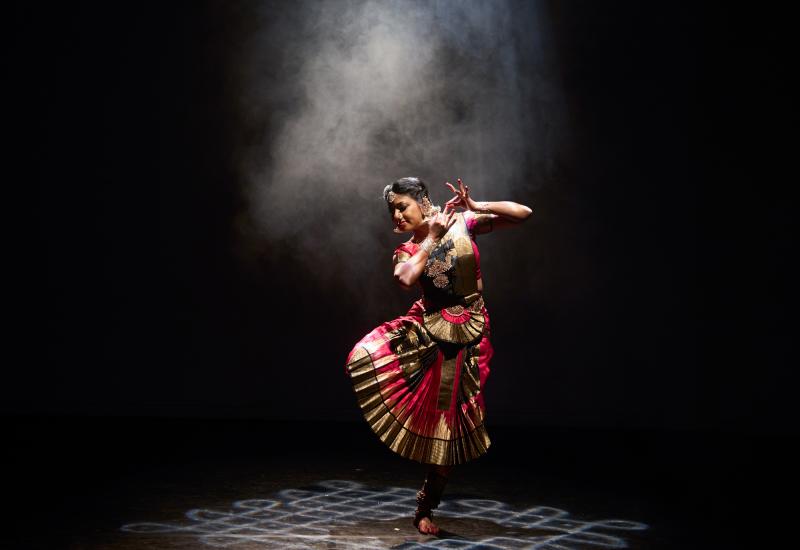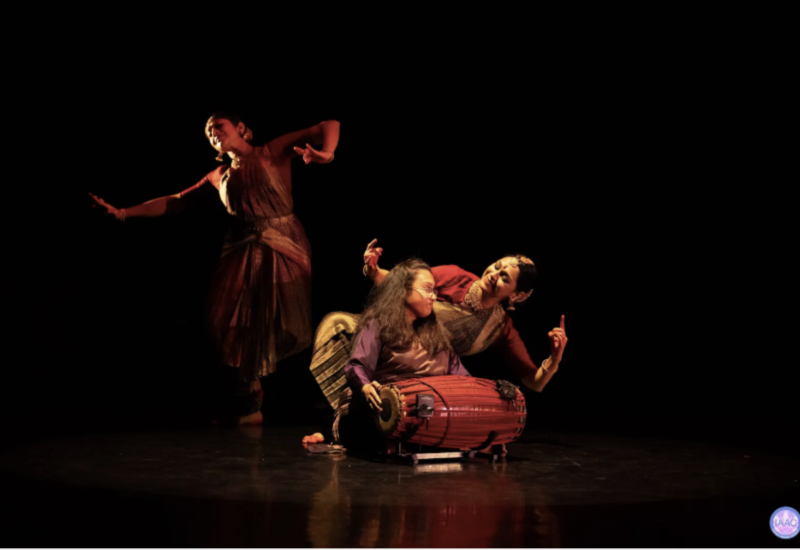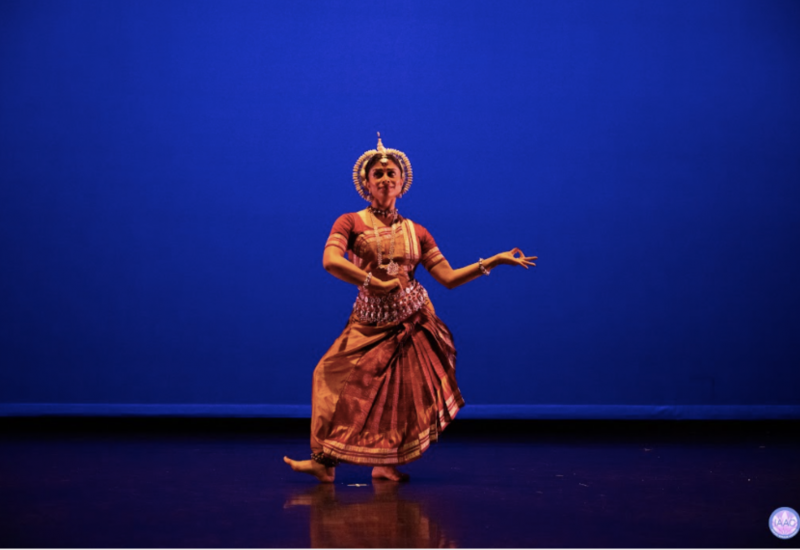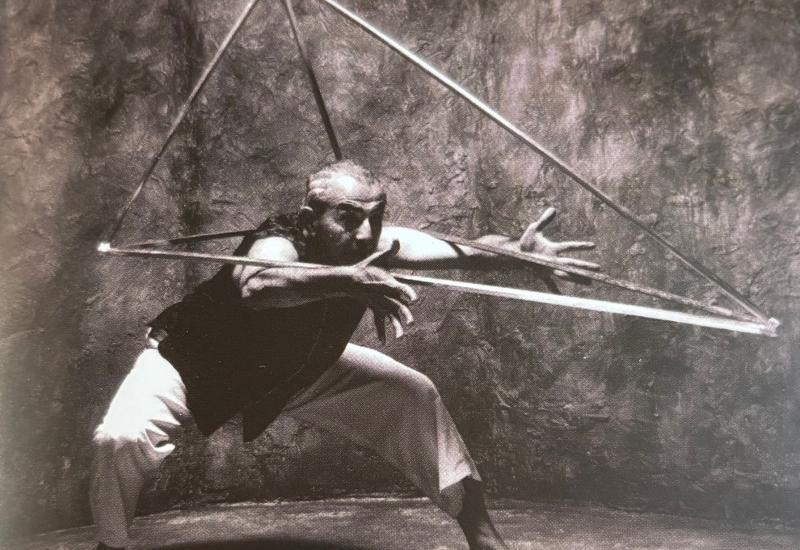Drishti – The Gaze of the Beloved
Drishti – The Gaze of the Beloved
The Hat Factory, Luton
19 July 2025
Presented by Kadam Dance
Photos: Simon Richardson
In celebration of the start of South Asian Heritage month, Elena Catalano and Katie Ryan Yeung presented Drishti – The Gaze of the Beloved. Drishti, meaning ‘gaze’, evokes a range of emotions, of commitment and inner peace, all of which were on display in the odissi duets and solos. Duets bookended the show, with traditional solos interspersed with contemporary choreography created and performed by each of the dancers. The opening Saraswati Vandana was a danced offering to the Goddess of Learning and the Arts. Created by the prominent Guru Kelucharan Mohapatra (who choreographed all but one of the traditional pieces), Catalano and Ryan Yeung began by scattering rose petals before taking us on a journey that explored the stage, countering each other in often mirrored movement. Clarity of gesture and calm strength travelled out in precise rhythms to Bhubaneshwar Mishra’s score setting a high standard for the evening.
The solos displayed how a dance form can be shaped by the movement qualities and personalities of individual dancers. Raga Mallika Pallavi delved into diverse rhythmic patterns in choreography and score by Ryan Yeung’s New Delhi based teacher Madhavi Mudgal. Here, a serene fluidity and flow belied the dynamic complexity of percussive footwork. In Leela Nidhi, Ryan Yeung portrayed the relationship between Radha and Krishna and the aftereffects of his prank of hiding Radha’s sari. A sense of playfulness and chastisement but ultimate love shone through vivid evocations of the deity and his beloved. In both solos, the gaze and an internal joy created scenes of rapture and serenity.
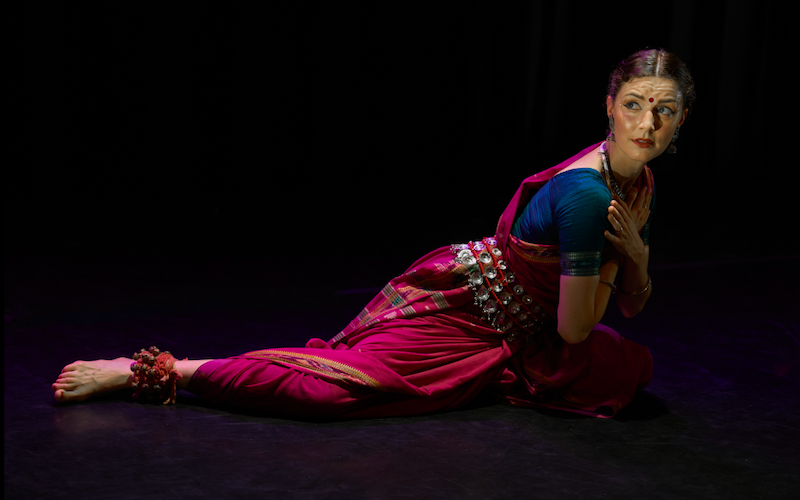
Catalano’s classical solo Durga Stuti danced to Debasish Sarkar’s musical composition creates a multi-layered portrayal of the goddess. A softness and warmth exude through a powerful femininity as Durga’s blessings are countered by the display of weapons held in her ten arms. As the action built up to a battle with the Demon Mahishasura, Catalano’s dynamic richness filled out the diverse aspects of the deity. Here the gaze was one of strength and divine power, of rising out of darkness.
Further comparisons between the dancers emerge in solos each created for themselves, both danced to poetry. The similarities end there, however, as Catalano took on La Pioggia del Pineto (Rain in the pine wood) by the Italian poet Gabriel d’Annunzio voiced over a piano score by Yann Tiersen. Dressed in long white tunic and wide floaty trousers, aspects of Odissi technique underpinned Catalano’s improvisational responses. Inspiration from nature emerge out of fluid gestures conveying different types of rain, the gentle shower to the gusty storm. The ‘S’ curve of the dance form travelled up through Catalano’s body and arms, moving beyond Odissi’s gestural language out through the tips of her fingers. A sensuous quality immersed the audience in the warmth of a Mediterranean summer.
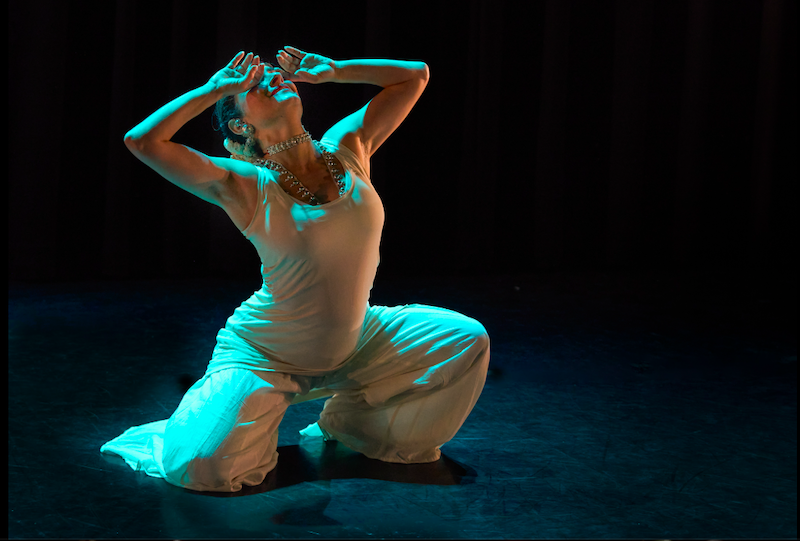
Ryan Yeung’s choreography was inspired by an excerpt from Rabindranath Tagore’s love poem cycle The Gardener in My Soul is Alight. Retaining a traditional odissi costume and more classical gestural vocabulary to interpret expressions of joy and love, she embodied a meditative quality. Evocations of adoration and wonder, peppered with Tagore’s imagery range from the ethereal to the material, such as fragrant incense smoke rising to the sky. Ranjana Ghatak’s atmospheric sound score established an electronic pulse, with sounds of flowing water and wind, Ryan Yeung’s hands fluttering in response.
Finishing with a return to the classical form, the dancers started low on the ground, curled around each other before rising up. In Moshka, meaning release, the dance patterns and gestures build up to a sense of liberation flowing through the body and out to the space. With the tribhanga shape clearly articulated at the centre of action, movement evolves into a celebration of emotional and physical transcendence. In Drishti, the gazes towards a beloved, towards deities, towards nature, towards the self and each other are matched by a rich palette of intricate rhythms and imagery that resonate long after the evening is over.








